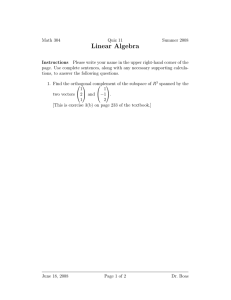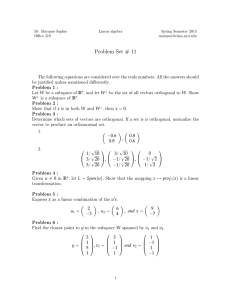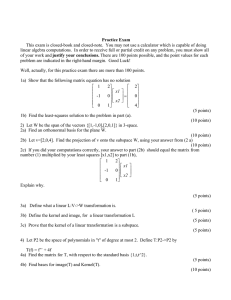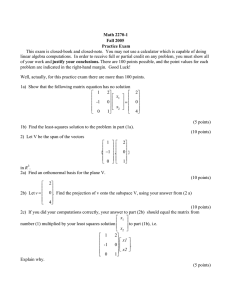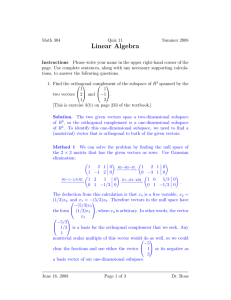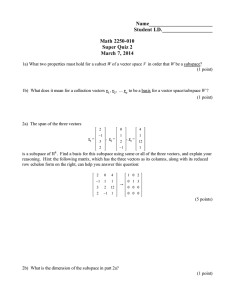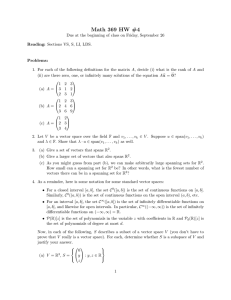Linear Algebra
advertisement
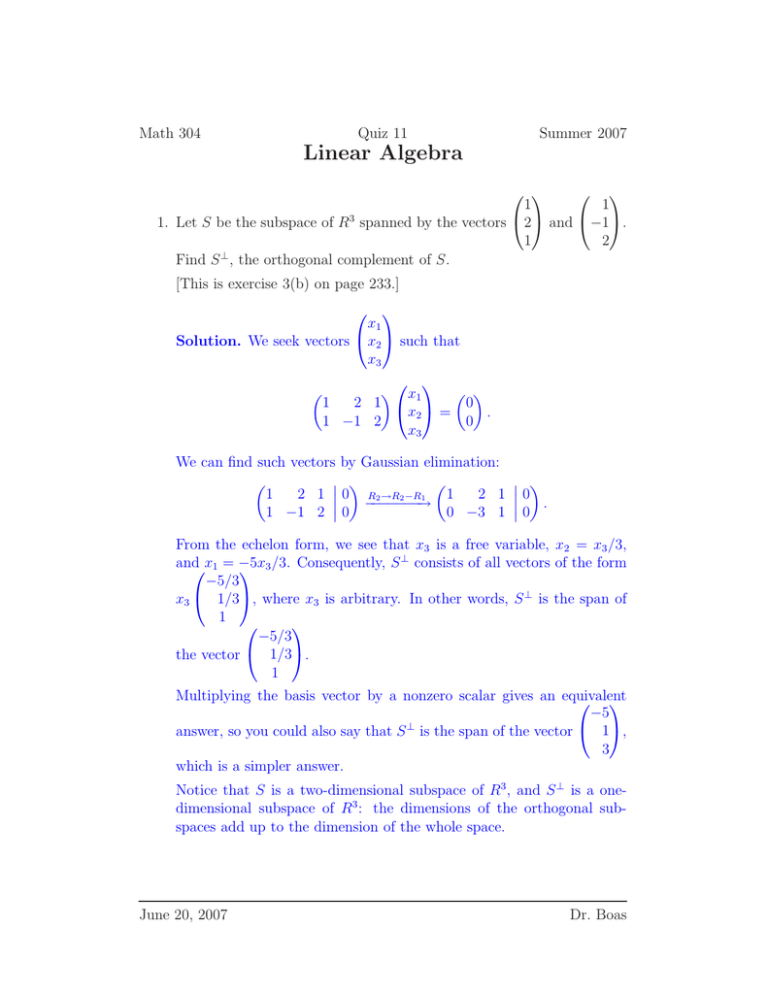
Math 304 Quiz 11 Summer 2007 Linear Algebra 1 1 3 1. Let S be the subspace of R spanned by the vectors 2 and −1. 1 2 ⊥ Find S , the orthogonal complement of S. [This is exercise 3(b) on page 233.] x1 Solution. We seek vectors x2 such that x3 x1 0 1 2 1 x2 = . 1 −1 2 0 x3 We can find such vectors by Gaussian elimination: 1 2 1 0 R2 →R2 −R1 1 2 1 −−−−−−−→ 1 −1 2 0 0 −3 1 0 0 . From the echelon form, we see that x3 is a free variable, x2 = x3 /3, ⊥ andx1 = −5x 3 /3. Consequently, S consists of all vectors of the form −5/3 1/3, where x3 is arbitrary. In other words, S ⊥ is the span of x3 1 −5/3 the vector 1/3. 1 Multiplying the basis vector by a nonzero scalar gives an equivalent −5 answer, so you could also say that S ⊥ is the span of the vector 1, 3 which is a simpler answer. Notice that S is a two-dimensional subspace of R3 , and S ⊥ is a onedimensional subspace of R3 : the dimensions of the orthogonal subspaces add up to the dimension of the whole space. June 20, 2007 Dr. Boas Math 304 Quiz 11 Summer 2007 Linear Algebra 2. Find a least squares solution of the linear system 3 1 −1 x1 0 1 = 0 . x2 4 2 0 Solution. Our method forsolving least squares problems is to multiply 1 0 2 by the transposed matrix . The result is the new system −1 1 0 5 −1 x1 11 = . −1 2 x2 −3 One way to finish the solution is to multiply by the inverse matrix 1 2 1 to obtain 9 1 5 1 19 1 2 1 11 x1 = . = −3 x2 9 1 5 9 −4 Thus x1 = 19/9 and x2 = −4/9. An alternative way to complete the solution is to use Gaussian elimination: 2 −3 R2 →R2 +5R1 −1 2 −3 5 −1 11 R1 ↔R2 −1 . −−−−−−−→ −−−−→ 0 9 −4 5 −1 11 −1 2 −3 From the second row, we see that x2 = −4/9, and back substitution shows that x1 = 19/9, as before. June 20, 2007 Dr. Boas

